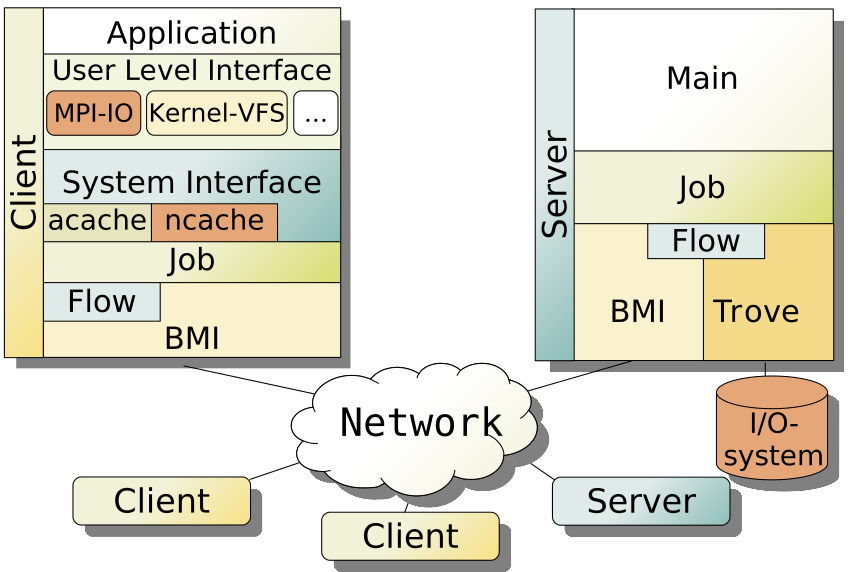Special Issue
Special Issue on Storage System Architecture
Introduction

This special issue aims to create an overview of the state of storage system architecture and through which architectural designs it can be advanced. Grasping the advantages and shortcomings of existing solutions will guide us towards storage systems that are able to fully keep up with future exascale systems.
With supercomputers becoming faster every year and recently even reaching the first exascale system, it is necessary that storage technologies are able to keep up such that these systems are fully able to exploit their compute powers when handling I/O-heavy workloads. Many storage systems for HPC, such as parallel and distributed filesystems exist. However, to clearly advance the field of storage system architecture, we need to understand how architectural features of storage systems contribute to the performance of various types of HPC workloads.
| Contact | Prof. Dr. Julian Kunkel |
About the Journal

JHPS introduces a unique combination of features of open reviews, living papers, digital replicability, and free open access supporting openness and trust in storage research.
Scope
We are looking for articles that describe and review (or compare) the architecture for a storage system with a focus on HPC storage solutions. It is important to us, to have a comprehensive set of file systems and storage systems including systems in production and systems still under development. We encourage researchers, developers and vendors to supply an article.
We provide a refined LaTeX template for the special issue to structure the submitted articles in a similar fashion. The rough structure is as follows:
- Introduction: should provide a background regarding the storage system, summarize it’s development history, its usage on existing systems, and a brief feature overview.
- Access Semantics: should list the supported logical objects and their semantics, limitations and features for parallel access.
- System Architecture: should describe the client and server components, their roles and interaction as well as the storage stack from the client to the servers and storage media.
- Storage Format: should describe the mapping of logical objects to physical object and ultimately storage media - this is traditionally referred to by the on-disk format.
- (Deep Dive on Features): this optional section should describe how certain features (such as redundancy) are realized with the system.
- Performance Characteristics: should provide some contemporary performance results, potentially discussing the impact of tunable settings and features.
- Conclusion and Outlook: should wrap up the article and provide a feature outlook.
Editors
Submission Process
More information about the publication process.
Submitted articles will be peer-reviewed according to the regulations of JHPS. However, a minor modification to the general review criteria applies to significance as the prime purpose is to summarize the state-of-the-art in the technology, novelty and research contribution will not apply.